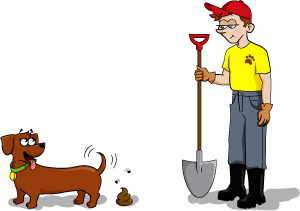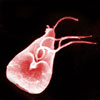

The Tail’s End © 2012-2022

The Scoop on Poop



The Tail’s End
Areas of Service
Washington
- Battle Ground
- Camas
- Hockinson
- Ridgefield
- Vancouver
- Washougal
- Woodland


In Seattle, WA over 20% of bacteria found in the area’s water came from dogs!
The following table lists some of the organisms & pathogens found in dog waste.
Dog Poop and Illnesses


Organism |
Common Name |
Survival |
Human Disease |
|
Toxocara canis |
Roundworms Toxocariasis |
4 years in soil |
VLM (visceral larva migrans) leading to hepatomegaly, myocarditis, nephritis, pulmonary inflammation, and blindness, usually in children |
|
Baylisascaris procyonis |
Roundworms |
Eggs can survive on moist soil for years |
Severe neurological form of VLM, especially in young children |
|
Ancylostoma spp. |
Hookworm |
Several days. No known effective chemical or pesticide. Prompt removal of dog and cat feces greatly reduces risk of infection. |
Spreading lesions and severe pruritis. In rare instances can cause symptoms like VLM. Puppies are a significant source of infection |
|
Cryptosporidium parvum |
|
At least 6 months |
Self-limiting gastroenterits, protracted in susceptible individuals. CDC reports 3000,000 annual cases - 90% from waterborne (i.e. rivers, lakes, etc.) |
|
Escherichia Coli |
E. Coli, fecal coliform bactiria |
Up to 4 months in ruminant feces. |
Bloody diarrhea, severe cramps, HUS (leading to kidney failure, and TPC. |
|
Giardia duodenalis |
Giardia, Giariasis |
Resistant to drying, chlorination, and temperature extremes. Can survive for months in water |
Diarrhea, cramps flatulence, nausea, steatorrhea. Can be protracted and debilitating. CDC estimates 2 million cases annually - 90% waterborne |
E. Coli

Roundworms

Giardia


Order Service Today



